AquaSticker
AquaSticker is an innovative biological sticker, penetrator and catalyst designed to improve pesticide efficacy. It works by stimulating competitive bacteria growth and temporarily disrupting the microbiota on algae and aquatic plants. This improves response times by increasing adhesion and uptake of pesticides on targeted algae / plants during treatments. Utilizing AquaSticker ensures a more efficient and thorough treatment process while reducing the environmental impact and need of more frequent pesticide applications.
AquaSticker is a dry soluble powder that mixes well with most aquatic pesticide formulations (copper, diquat, flumioxazin, endothall, etc.). It should be fully dissolved in the pesticide solution and applied according to the pesticide instructions.
AquaSticker is recommended to be included in treatments on planktonic and filamentous algae (cyanobacteria and green), floating plants, and grasses. It can also be utilized with Natural Lake Biosciences’ CattZilla or PondZilla Pro to boost performance.
Algae and aquatic plants host distinct microbial communities on their surface called the microbiota. This diverse community of microorganisms (bacteria, fungi, archaea, and viruses) can be both mutualistic and pathogenic. The microbiota plays a key role in protecting algae and aquatic plants from environmental impacts, pathogens, and chemical attacks. It also is important in fixating nutrients for growth. The community can adapt or shift according to the conditions to promote the health and survival of its host.
IMPROVING PROBIOTICS
AquaSticker’s unique traits and essential components allow it to combine well and improve the performance of our probiotics and
biocatalysts (Water Column Clarifier and PondZilla Pro). When blended together, AquaSticker and Water Column Clarifier will improve formation of
microfloc which clarifies the water. When mixed with PondZilla Pro, AquaSticker improves the biological reaction at the surface of the algae or
plant. PondZilla Pro works synergistically with systemic herbicides and ensures thorough and complete degradation of dead aquatic plants.
IMPROVING PESTICIDES
The effectiveness of chemical treatments can be limited by the microbiota that protect their hosts
through metabolic shifts and biofilm production, defending algae and aquatic plants from substances like copper and diquat. AquaSticker,
when combined with algaecides and herbicides, temporarily disrupts this protective microbiota by promoting competitive microbial growth. This
disturbance enhances chemical uptake by the host and improves contact time with targeted algae and aquatic plants by slowing dissipation in
the water and increasing adhesion.
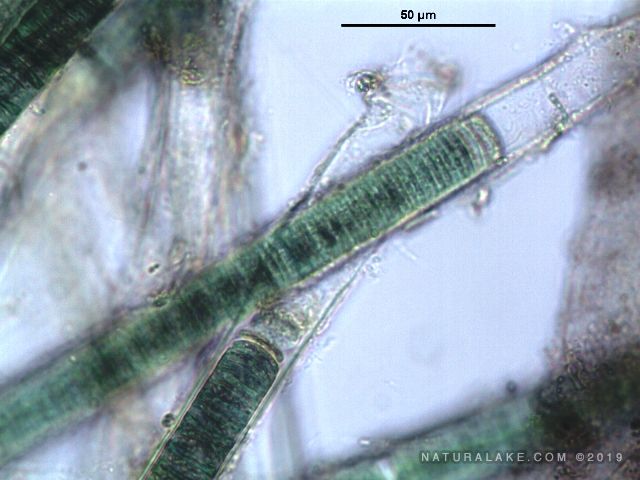
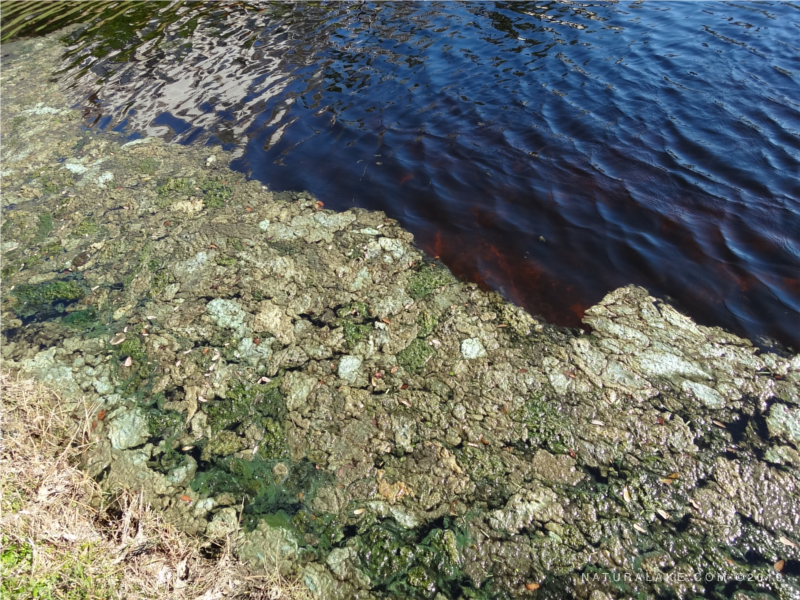
An Example of Lyngbya‘s Protective Microbiota
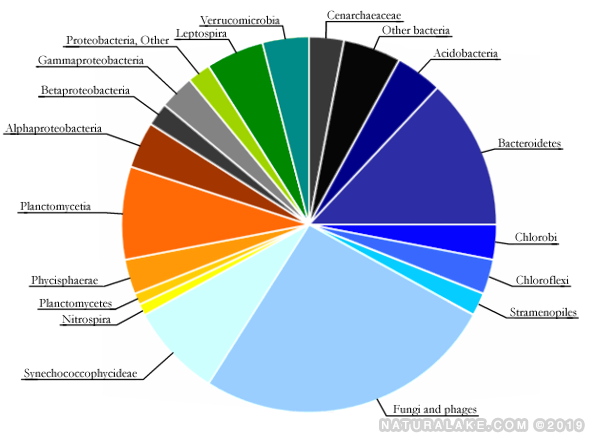 This graph represents the microbiota surrounding a sample of Lyngbya tested in the lab.
This graph represents the microbiota surrounding a sample of Lyngbya tested in the lab.
Dosage Rates
WHEN MIXED WITH PESTICIDE
| Treatment Area | Cyanobacteria | Planktonic Algae | Aquatic Plants |
| 10,000 sq ft | 1 – 5 pounds | .5 – 1.5 lbs | .5 – 2.5 lbs |
| 1 Acre | 5 – 20 lbs | 1 – 3 lbs | 1 – 5 lbs |
*Fully dissolve AquaSticker in chemical solution and spray evenly over target.
**Do not mix directly with peroxide based algaecides.
Common Uses
- Lakes and ponds
- Aquaculture
- Hatcheries
- Water features
- Golf courses
- Retention ponds
- Decorative Ponds
- And more!
Benefits
- Increases chemical uptake
- Speeds chemical reactions
- Boosts probiotic performance
- Improves adhesion and contact
- Less chemical use
- Safe for environment and applicator
- Works especially well with copper sulfate
Available Sizes
- 30 pound pail, 1 pound water-soluble packets
- 30 pound pail, bulk
| Specifications | |
| Ingredients | Bio-vitamins, probiotics, and micronutrients |
| Description | Light tan powder |
| Odor | Earthy odor |
| pH | 7.0 – 7.5 |
| Stability – Activity loss | At 75 degrees F for 12 months*: 10% or less; At 100 degrees F for 6 months*: 10% or less; *When stored as directed in a sealed container out of direct sunlight. |
| Storage and Handling | Store in a cool, dry space between 50-80 degrees F. Keep out of direct sunlight and do not store with strong oxidizing agents. |
SUMMARY: This pond is located in Geneva Alabama and was overgrown with fragrant water lilies and water shield lilies. With the help of aquatic herbicides and Natural Lake products, we were able to control the lilies.
SOLUTION: I treated the lilies with a tank mix consisting of flumioxazin, Pondzilla, and Aquasticker.
RESULTS: The Pondzilla and Aquasticker drastically increased response time which led to faster results. The addition of Pondzilla also rapidly increased the decomposition of dead plant material.
SUMMARY: A ~1.75ac private pond in Virginia quickly became 50% covered with some type of gelatinous Lyngbya species. Lyngbya is a filamentous cyanobacteria associated with high organic content. It forms large floating mats and is widely known to be difficult to treat. Copper/diquat and Copper/flumioxazin tank mixes alone did not show any response.
SOLUTION: : Natural Lake’s Pondzilla Pro and AquaSticker. Herbicide Mix: Copper/Diquat or Copper/Flumioxazin.
RESULTS: 95% control 10 DAT
SUMMARY: A 13-acre lake with over 400 acres of farm field runoff was having extreme Planktonic/Cyanobacteria outbreaks throughout the entire lake. Normal treatments with just chelated copper were not enough.
SOLUTION: Tank mix of chelated copper, AquaSticker, and Pondzilla Pro.
RESULTS: We saw better response to chemical treatment on the Planktonic/Cyanobacteria and water clarity improvement. Without these products the Planktonic/Cyanobacteria would continue to be an uncontrollable nuisance.
SUMMARY: One seven-acre lake was experiencing frequent heavy algal blooms.
SOLUTION: Add 15lbs of AquaSticker to copper algaecide to improve algaecide performance, treated one time.
RESULTS: After two weeks, the algae was gone and the pond was clear.
SUMMARY: A stormwater pond had a severe vegetation/muck mat making it difficult to ascertain a pond was even there. There little to no storage capacity and the pond was unable to function as designed.
SOLUTION: A four part treatment was used each 30 days apart. Treatment 1: AquaSticker + herbicide, Treatment 2: AquaSticker + herbicide +PondZilla Pro, Treatment 3: PondZilla Pro + Nature’s Blend at 3 lb/acre + MuckBiotics at 40 lb/acre, Treatment 4: PondZilla Pro + MuckBiotics at 40 lb/acre.
RESULTS: With the four-part treatment they saw an increase in storage volume, the storage pond was able to properly function, and they saw cost savings.
SUMMARY: A problematic lake in Florida was not responding to traditional algaecide treatments. 10 months of treatment yielded very little progress.
SOLUTION: Add PondZilla Pro and AquaSticker to the algaecide treatments to improve the algaecide response time and breakdown the dead algal biomass.
RESULTS: The additions Natural Lake Biosciences’ biocatalysts (PondZilla Pro and AquaSticker) helped clean up the pond in just a few weeks. Treatments were more effective and longer lasting.
SUMMARY: A lake at the center of a residential community was experiencing harmful algal blooms that limited use of the lake. The cyanobacteria, Lyngbya, bloomed frequently throughout the summer season and was not responding to traditional chemical treatments.
SOLUTION: Incorporate AquaSticker into chemical treatments to kill the cyanobacteria and apply MD Pellets to reduce the internal nutrient load.
RESULTS: Cyanobacteria blooms were reduced in both frequency and intensity and the lake became safe for residence to use.
SUMMARY: This lake was experiencing outbreaks of various aquatic plants including bladderwort, water shield and fragrant water lilies. Targeting several species and restricted access to the waterbody was limiting treatment options and coverage.
SOLUTION: Added AquaSticker to the herbicide combination to improve adhesion and increase herbicide uptake.
RESULTS: The treatment was successful, and the lake remained clear of the targeted aquatic plants 40 days after the initial treatment.
SUMMARY: These private landowners have a shallow pond with little aeration —one small fountain runs a few hours a day. The waterbody receives heavy nutrient loading as a result of an aerobic septic system that broadcasts in their watershed. At times more than half of their pond would be covered in a mat of tolypothrix.
SOLUTION: Created an algaecide recipe that included an application of Aquasticker to control growth.
RESULTS: The treatment was successful while reducing maintenance costs. More importantly, the homeowner was extremely pleased to see that their pond was successfully cleared of algae and aquatic weeds with less chemical use. were used during the treatments.
The Natural Lake Biosciences Research & Case History Rewards Program is an annual contest created to allow lake managers to show off all the great work they do with Natural Lake Biosciences products. Follow the links below to learn more about the program, how to enter, and what constitutes a winning case study.
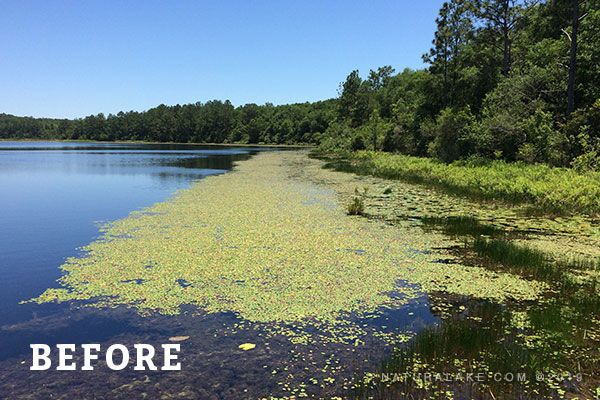
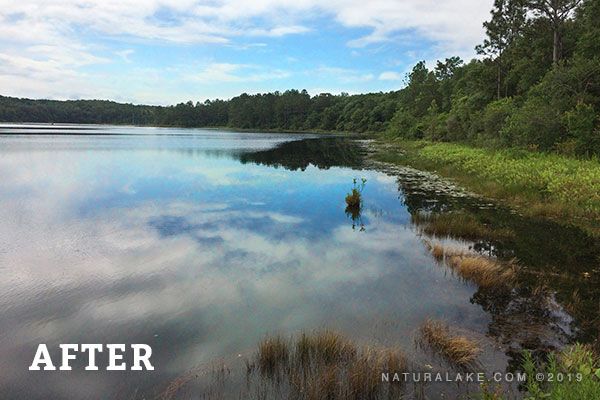
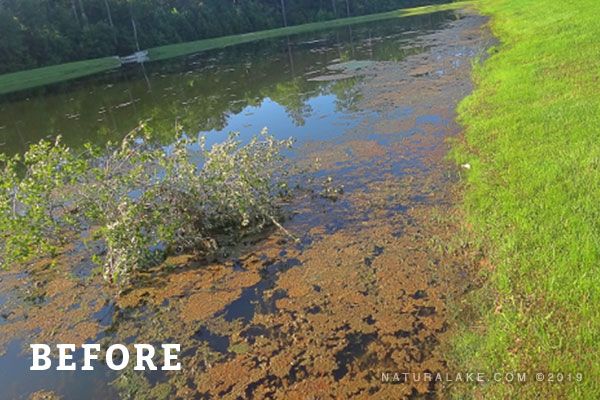
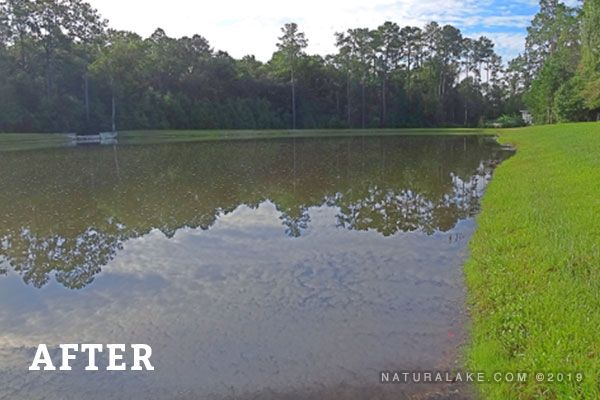
Commonly treated algae and plants:
- Anabaena
- Microcystis
- Lyngbya
- Oscillatoria
- Plankothrix
- Widgeon grass
- Spikerush
- Water lillies
- Other plants
- Chlorella

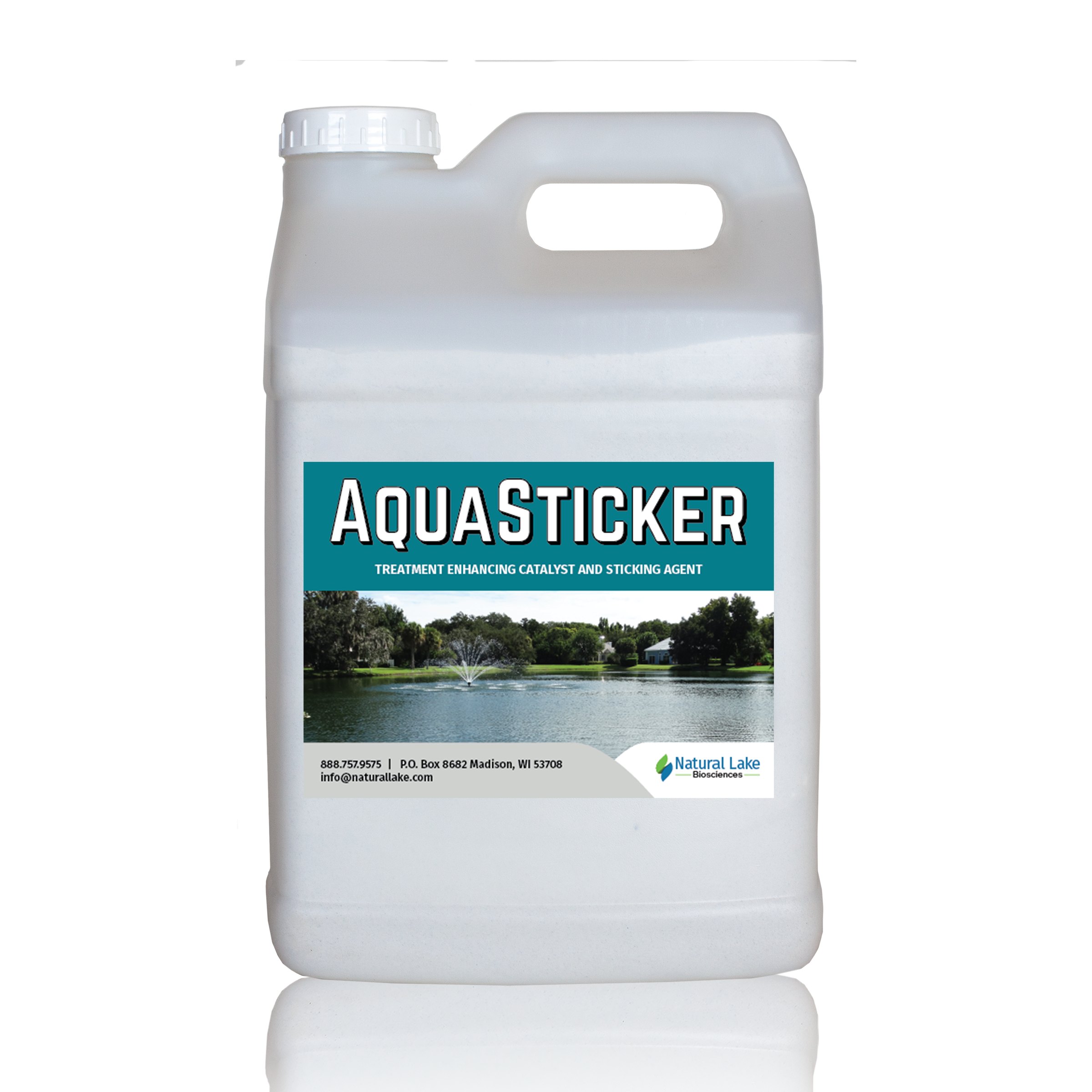
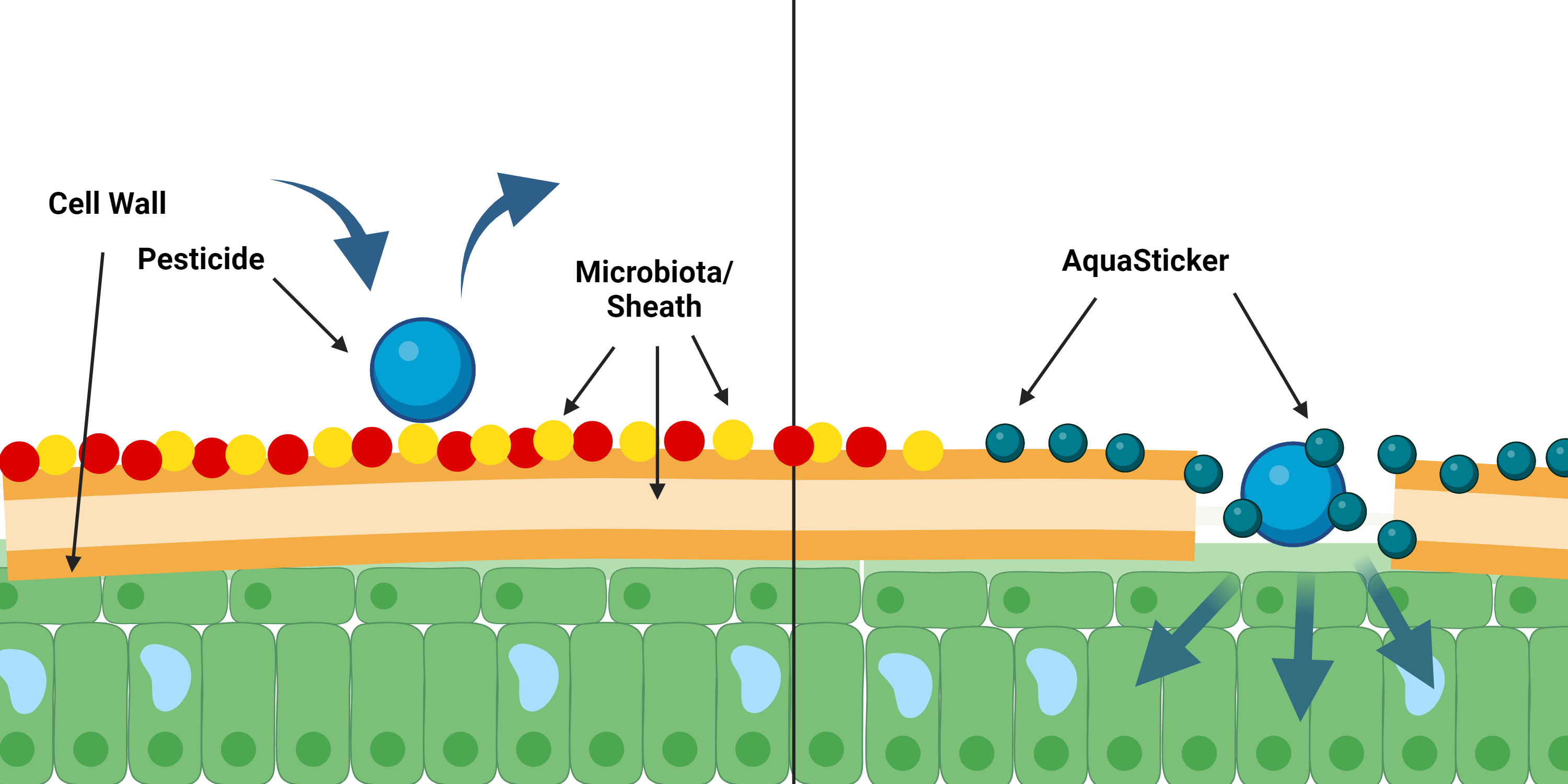



Robin K. (FL) –
Being in the Aquatics field for almost 30 years I would highly recommend these products, if you’re wanting to target your herbicide to a specific area I highly recommend the AquaSticker.
Reniel R. (FL) –
Awesome